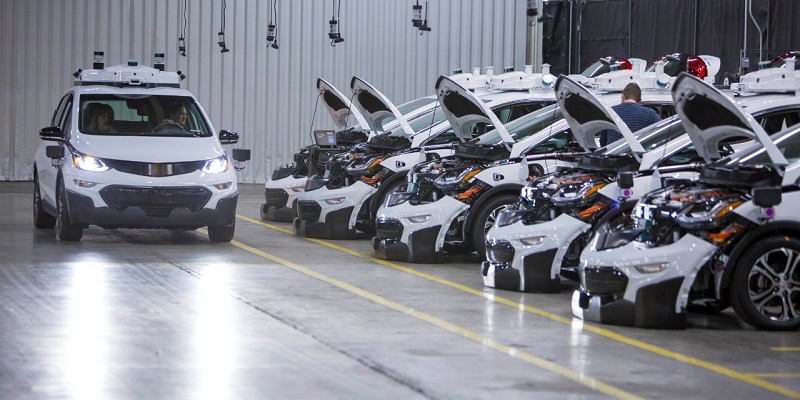General Motors plans to mass produce all-electric, self-driving Chevy Bolts without steering wheels or pedals within the next 24 months.
State Planners Look at Bigger Roads, Driverless Lanes to Reduce Congestion and Auto Accidents
Denver beltway drivers may soon have to share the road with, well, nobody. There could be nobody driving the car in the lane next to you if state transportation planners have their way.
Designated lanes for autopilot cars are only one ambitious part of traffic engineers’ plans to untangle traffic jams around the western Denver area, The Denver Post’s John Aguilar reported. The plans would widen C-470 to 10 lanes just south of Interstate 70. Several of those lanes would be toll lanes and could eventually be designated for those autonomous cars. Plans would also broaden Highway 93 to four lanes south of the city.
It’s the will of state lawmakers and budgetary concerns, though, that will determine whether the state pursues these or less-ambitious options for dealing with Denver’s swelling population and resulting traffic problems. The 26 miles of improvements to C-470, Highway 93, and U.S. 6 could cost $1 billion to $2 billion, The Post reported. That’s a deep bucket to fill given the state’s already tight transportation budget and the other projects competing for state dollars. Shailen Bhatt, who recently resigned as executive director of the Colorado Department of Transportation, forecast last year that the state will need an additional $9 billion to $10 billion to meet its road-building needs over the next decade.
Ben Davis, CDOT project manager, said the new expansion plans mark the first time the department included self-driving cars in a formal planning document, The Post reported. He said the agency would probably wait for wider adoption of self-driving cars before it phases in the restricted lane usage.
Davis said, “This concept assumes vehicle technology will continue to evolve that would allow vehicles to travel in a specified lane to maximize the technological benefits of autonomous vehicles.”
Colorado isn’t alone in planning for cars that have been liberated from the control of human hands, The Post said. Wisconsin road planners are considering plans to designate special lanes for autopilot cars along part of Interstate 94. Washington State officials are considering similar options for I-5 through Seattle.
Autopilot Autos: The Future of (Not) Driving?
As fantastic as autonomous cars and trucks seem to most people, big automakers in Detroit, Japan, and Europe are announcing plans to sell such models to the public as early as 2019. California’s upstart carmaker Tesla Motors has been manufacturing them for years, but doubts about the systems’ safety have hamstrung its goals for widespread usage.
In January, however, General Motors announced plans to mass produce all-electric, self-driving Chevy Bolts without steering wheels or pedals within the next 24 months, The Verge online journal reported. They will be the fourth-generation of Bolts, which the carmaker is testing on public roads in San Francisco and Phoenix. The new batch will be rolled out as a fleet of ride-hailing vehicles in some parts of the country. Ford will start producing autonomous cars without manual controls by 2032, The Verge reported. In late January, online journal CNET.com reported that Ford has even applied for a patent for a driverless police car that could issue speeding tickets, with or without assistance from a human cop.
The National Highway Traffic Safety Administration, citing 37,461 deaths from auto accidents across the United States in 2016, describes the use of automatic crash-avoidance systems in cars and trucks and the development of fully automatic vehicles as the latest eras in the evolution of automotive safety. The continuing developments in the technologies “aim to deliver even greater safety benefits and — one day — deliver automated driving systems that can handle the whole task of driving when we don’t want to or can’t do it ourselves.”

